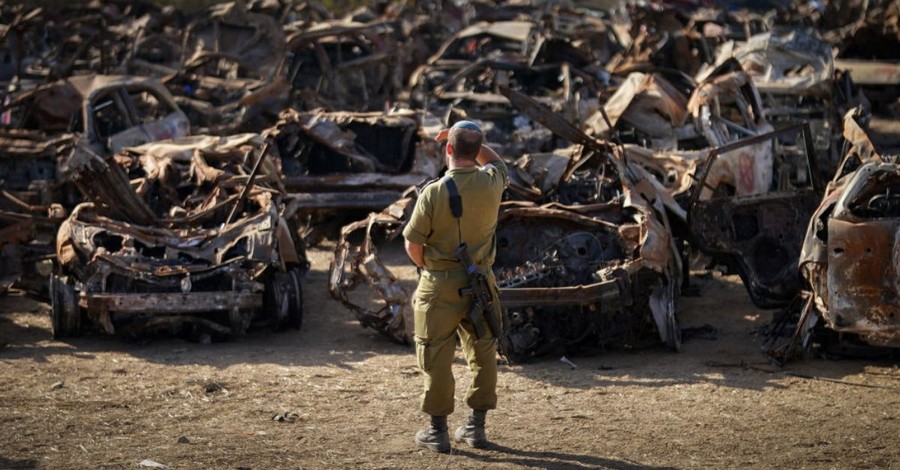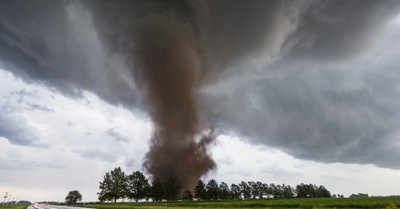
The Oct. 7 terrorist attack by Hamas on Israel sparked a war that has resulted in thousands of deaths and instability across the region.
It also led to a debate over facts -- and confusion over what is and is not true.
From the beginning, the United States supported Israel in the war.
“Let there be no doubt: The United States has Israel’s back,” President Biden said in October. “We will make sure the Jewish and democratic State of Israel can defend itself today, tomorrow, as we always have. It’s as simple as that.”
Following are five common questions, with answers, about Israel, Hamas, and Gaza:
What is Israel’s ultimate goal?
Israeli Prime Minister Benjamin Netanyahu said in October, “We have set the clear goal of destroying Hamas's military and governing capabilities. We are doing this systematically.” Another goal, he said, is “returning the hostages home.”
Netanyahu, in December said he had “received full backing” from President Biden “for the ground incursion and blocking the international pressure to stop the war.”
What happens after the war is up for debate. The Wall Street Journal cited a senior Israeli official as saying “forces could remain inside Gaza for an indefinite period.”
Another possibility is creating unoccupied buffer zones between Gaza and Israel upwards of a mile wide to help stop future attacks. The land could come from Gaza’s land.
“Israel wants this buffer zone between Gaza and Israel from the north to the south to prevent any Hamas or other militants from infiltrating or attacking Israel,” an expert in the region told Reuters.
Does the United States support a ceasefire?
The United States was one of 10 nations to oppose a United Nations General Assembly resolution demanding a ceasefire this week. Ambassador Linda Thomas-Greenfield, the U.S. representative to the U.N., proposed an amendment that said the U.N. “condemns the heinous terrorist attacks by Hamas.” It was voted down.
“There are aspects of this resolution that we do support,” Thomas-Greenfield said. “We agree that the humanitarian situation in Gaza is dire and requires urgent and sustained attention as civilians desperately need food and water and medical care. But we also support speaking out with one voice to condemn Hamas’ actions on Oct. 7. Why is that so hard?”
This week, U.S. National Security Council spokesperson John Kirby said Hama could put an end to the war if it did three things: “lay down your arms, turn over those who were responsible for the Oct. 7 attacks, and give up all the hostages.”
“It could be over today,” Kirby said.
How many hostages did Hamas take, and how many have been released?
The Hamas attacks on Israel on Oct. 7 resulted in 1,200 Israelis killed and 240 Israelis and other foreign nationals taken hostage.
The one-week ceasefire in November led to the release of 105 hostages.
“Israel believes that 138 hostages remain, although the IDF has confirmed the deaths of 18 hostages due to new intelligence and findings from soldiers in Gaza,” according to the American Jewish Committee.
What is Hamas?
Hamas was founded in 1987 by Sheikh Ahmad Yasin, a Muslim religious leader, with the goal of creating an Islamic state in Israel, the land Hamas calls “Palestine.” The Hamas charter pledges the elimination of Israel. The charter reads, “Israel will rise and will remain erect until Islam eliminates it as it had eliminated its predecessors.”
Hamas won an election in 2006 that allowed it to govern Gaza.
The United States and the European Union consider it a terrorist group.
Biden, in October, called Hamas a terrorist group.
“Entire families were slain. Young people massacred while attending a musical festival to celebrate peace. Women raped, assaulted, paraded as trophies,” he said.
The victims, he said, included “Infants in their mothers’ arms, grandparents in wheelchairs, Holocaust survivors abducted and held hostage -- hostages whom Hamas has now threatened to execute in violation of every code of human morality”
“The brutality of Hamas, this bloodthirstiness, brings to mind the worst -- the worst -- rampages of ISIS,” Biden said.
Is Gaza a country?
No. The Gaza Strip is a territory that occupies 140 square miles along the Mediterranean Sea and is “unusual in being a densely settled area not recognized as a de jure part of any extant country,” according to Britannica. Its population is estimated to be 2.2 million. It borders Israel to the north and east. To the south, it borders Egypt.
One-tenth of the population works in Israel.
“Agriculture is the economic mainstay of the employed population, and nearly three-fourths of the land area is under cultivation,” Britannica said. “The chief crop, citrus fruit, is raised on irrigated lands and is exported to Europe and other markets under arrangement with Israel. Truck crops, wheat, and olives also are produced. Light industry and handicrafts are centered in Gaza, the chief city of the area.”
Israeli soldiers pulled out of Gaza in 2005.
Photo Courtesy: ©Getty Images/Christopher Furlong / Staff
Michael Foust has covered the intersection of faith and news for 20 years. His stories have appeared in Baptist Press, Christianity Today, The Christian Post, the Leaf-Chronicle, the Toronto Star and the Knoxville News-Sentinel.










